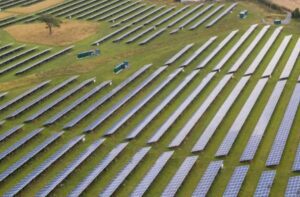The federal government has made much of its “face off” with Big Tech in the showdown over digital media, but do Australian governments have the courage to take on the coal lobby, in the big energy showdown of our era?
In 2019, Australian governments charged the Energy Security Board (ESB) with the daunting task of making the National Electricity Market (NEM) fit for purpose in this age of renewable energy and climate action: the ‘Post 2025’ project.
The challenge is that the NEM was designed around coal. Australia must remake the system so it will deliver affordable, reliable electricity generated by solar, wind and water.
Like the tensions that run from Canberra to the Hunter, the redesign is another frontier between clean and dirty energy. Coal dominates the NEM and it is being outpriced by renewable energy.
Coal generators want to hold back competition and block or at the very least delay any reforms that accelerate the clean energy transition.
The economics of electricity are a zero-sum game for generators. If clean wins, coal loses. Australia’s private owned coal generators, including the dominant retailers AGL, Origin and EnergyAustralia, are facing billions of dollars in write downs.
They gambled on being able to retire their coal fleets in the 2030s. This is looking increasingly risky.
Recent research shows that some will retire years earlier than their owners are admitting. ESB Chair Kerry Schott says five coal power stations will be loss-making by the time the redesign in implemented in 2025.
This is backed up by a study which suggests that coal generators revenues could fall by as much as two-thirds by 2025. David Leitch predicts that in addition to Liddell, Yallourn, Vales Point and some Queensland generators could all close by 2030.
Now the whisper campaign from coal central is that its all about to ‘coalapse’ in a heap. The market has failed and we need to step in and, wait for it, pay loss-making coal generators to stay around.
This will have three impacts.
Firstly, it keeps emissions high.
Secondly, it will push prices up.
Thirdly, it creates new reliability challenges because soon the daytime peak of solar production will push all coal generators down to their minimum safe operating level. If all the coal fleet is at its minimum output, it has zero downward flexibility.
If demand drops suddenly on a hot day in summer, or the wind blows much harder than predicted, coal will have nowhere to go but off a cliff. Coal units will have to be shut down at a moments notice.
Coal is holding the NEM reform process hostage. The coal lobby has held back sensible reforms like demand response for years and now the NEM is in a tricky place, overly reliant on a coal fleet we cannot rely on anymore.
So what should the ESB, governments and NEM wonks do now?
First, turn away from the incumbents and to new entrants and innovators to provide the new ideas. We only ‘need’ coal because we have not designed a post-coal NEM yet. Let’s get on with it.
Secondly, work out what the NEM needs. It does not need more ‘baseload’, which is inflexible and incompatible with high levels of wind and solar.
The resource adequacy gap will be filled by building new, flexible resources and paying customers who support the grid during extreme events. This is probably going to be batteries, batteries, batteries early on.
From 1 October this year wholesale demand response will evolve and ARENA can continue to drive innovation there until we have a mature market in ‘negawatts’.
Thirdly, we need to forget the rent-seeking arguments of the coal generators and agree on a tight set of clear design principles that everyone else can agree with. Here are three to get the ball rolling:
- Competition: prevent the coal and gentailer companies that dominate the generation and retail markets, from dominating the essential system services market
- Technological innovation: drive new technological solutions, which will improve security and reduce cost
- Federated planning: States are taking the lead with comprehensive REZ investment, planning and procurement policies and the national market in essential system services must accommodate each state’s energy priorities
We can not afford to allow coal generators to hijack the clean energy transition.
The ESB and in particular its independent chair Kerry Schott and deputy David Swift should know that Australia has their back.
The 2020s will be all about increasing climate ambition and propping up coal should be the last thing on the NEM reform agenda.
Dan Cass is energy & regulatory lead at independent think-tank, the Australia Institute.








